The Shoelace Problem – What’s the Best Way to Lace Your Shoes?
By Peace Foo 胡適之
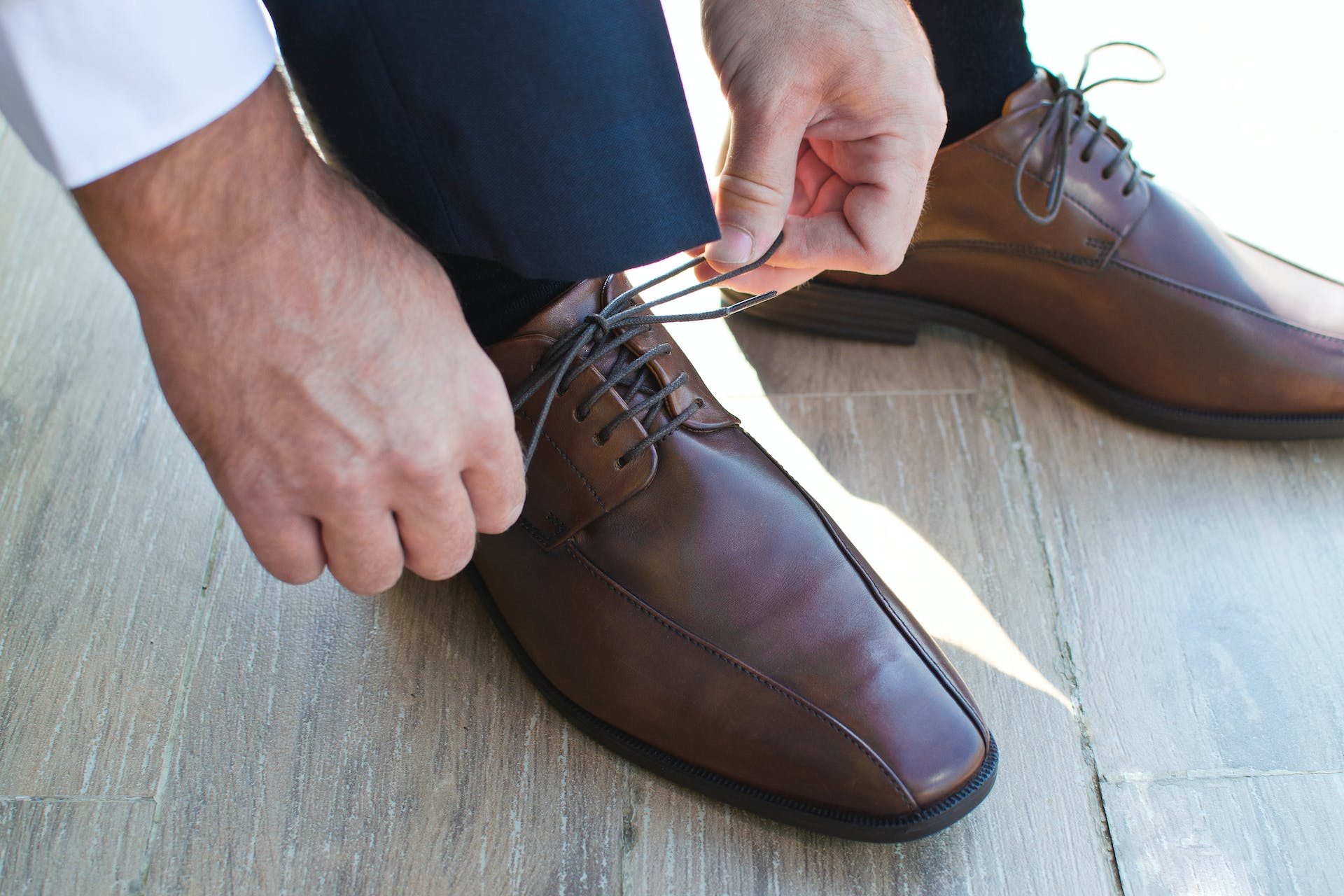
What is the best way to lace your shoes?
This isn’t a math question, so let’s change it slightly: What is the shortest way, and what is the strongest way to lace your shoes?
My guess is you’ve never had to think about these questions, but maybe your parents remember cutting off lengths of shoelace to use or testing the strength of their own shoelaces. You can see how relevant those questions might be. Nowadays we don’t consider them because the shoe manufacturers do it for us; their costs and profits depend on it, and they may even use the same mathematics as this article describes to come up with answers.
Lacing a Shoe
Mathematically, a shoe has two columns of n eyelets each, which we can label A1, … , An, B1, … , Bn in columns A and B (Figure 1). Without loss of generality, let the gap between columns A and B be g units, and the height between successive eyelets in a column be h units. A segment is formed every time the lace go through an eyelet from the previous one. A lacing is a way to pass a shoelace through every eyelet once each, starting at An and ending at Bn. By counting, we know that a lacing consists of 2n – 1 segments.
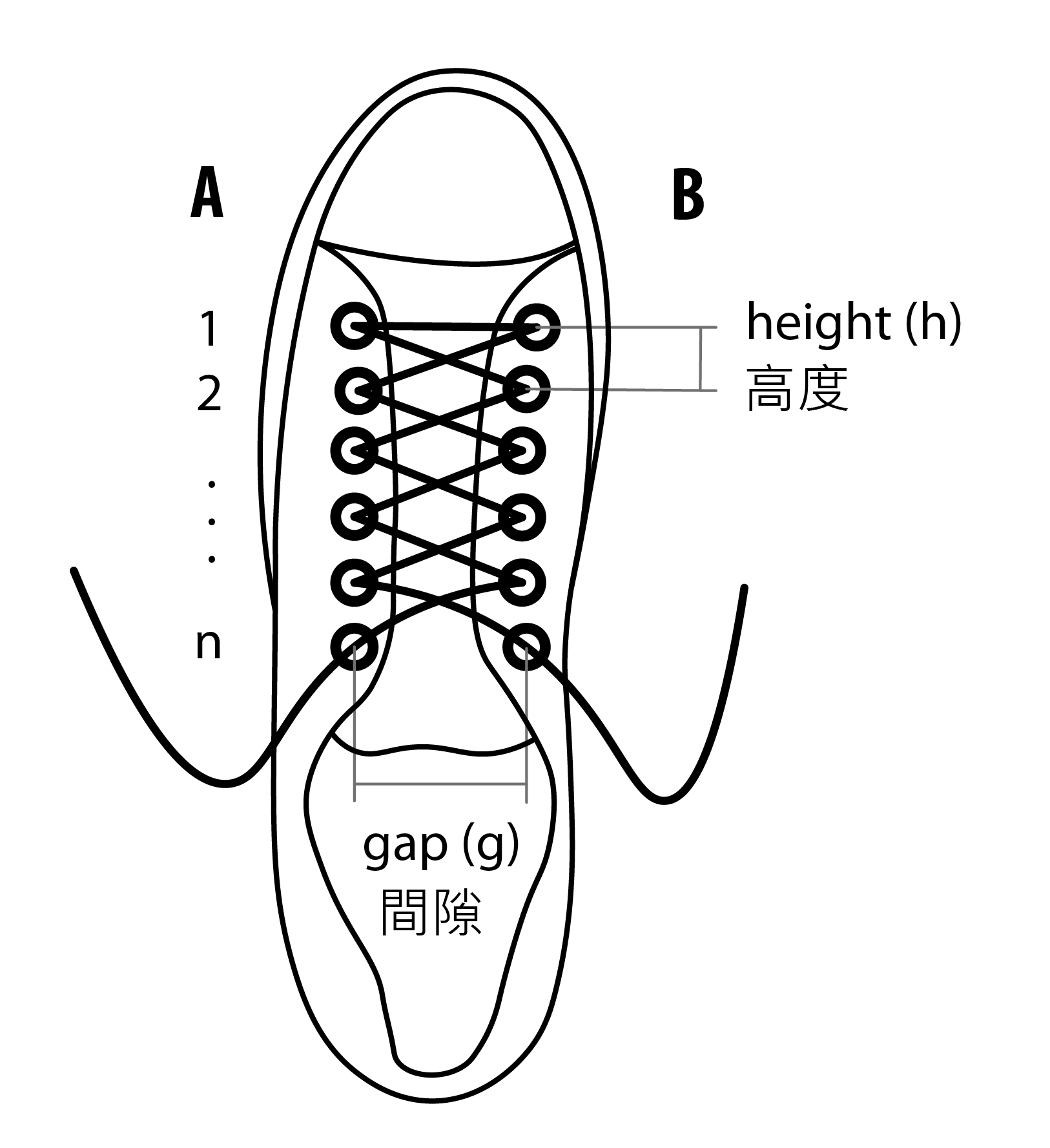
Figure 1 A shoe in a lacing which contains 2n – 1 segments
Since the main purpose of lacing a shoe is to pull the two sides of the shoe together, we can add a constraint that three consecutive eyelets along a lacing can’t all be in the same column [1]. In other words, we can’t form a long vertical line along a single column.
“Dense” lacing methods have the extra condition that the lace always alternates between columns A and B; in other words, there are no vertical segments. The three most common dense methods are shown in Figure 2, which we’ll call the crisscross, the European, and the shoe-store methods [2].
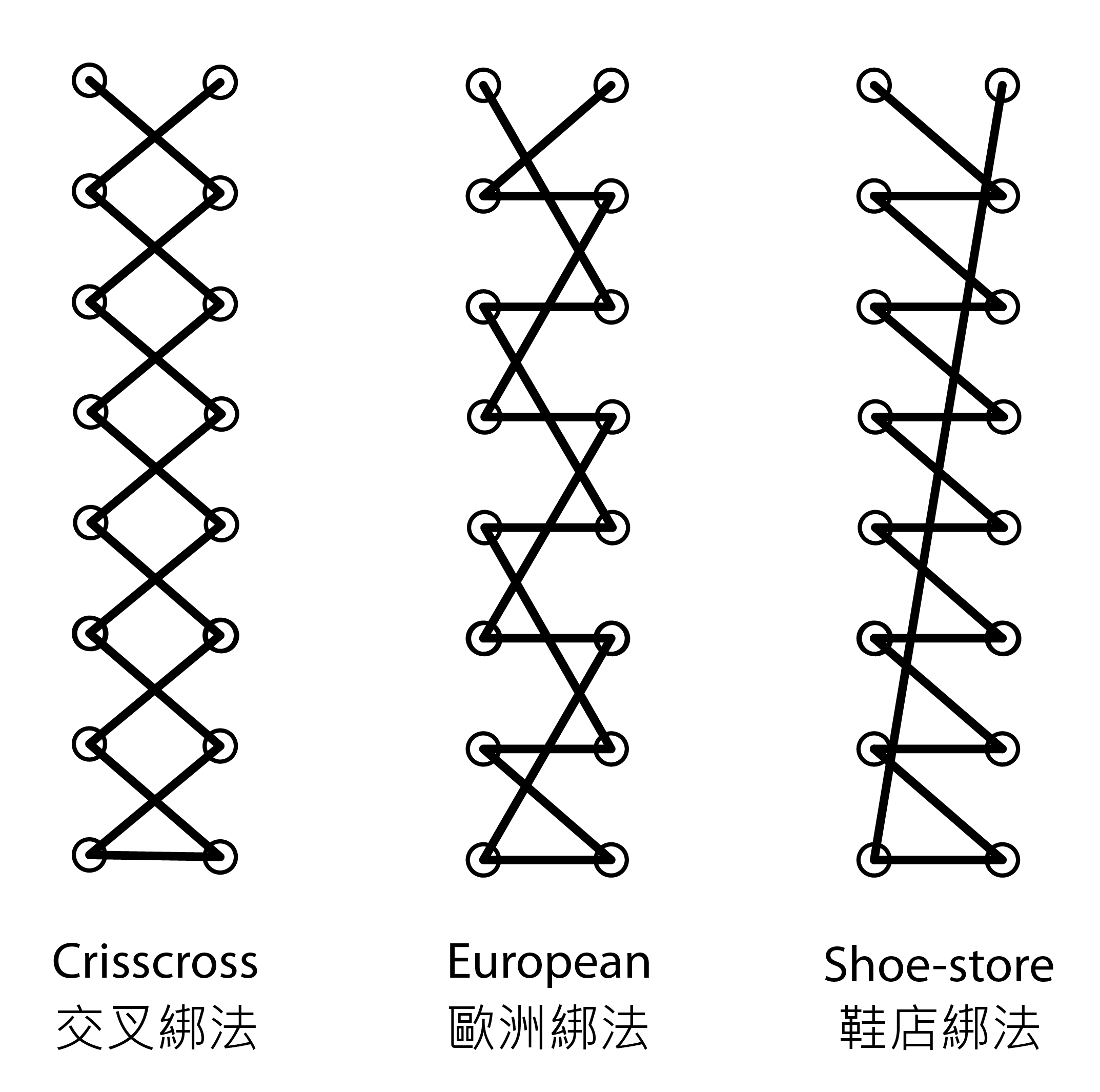
Figure 2 Common dense lacing methods: crisscross, European, and shoe-store.
On the other hand, two common methods that use vertical segments are Canadian straitlacing and the bowtie methods (Figure 3). (Canadian straitlacing is named for its historical usage by Canada’s armed forces, mainly because boots laced this way can be easily removed with one cut of a knife in case of emergencies [3].)
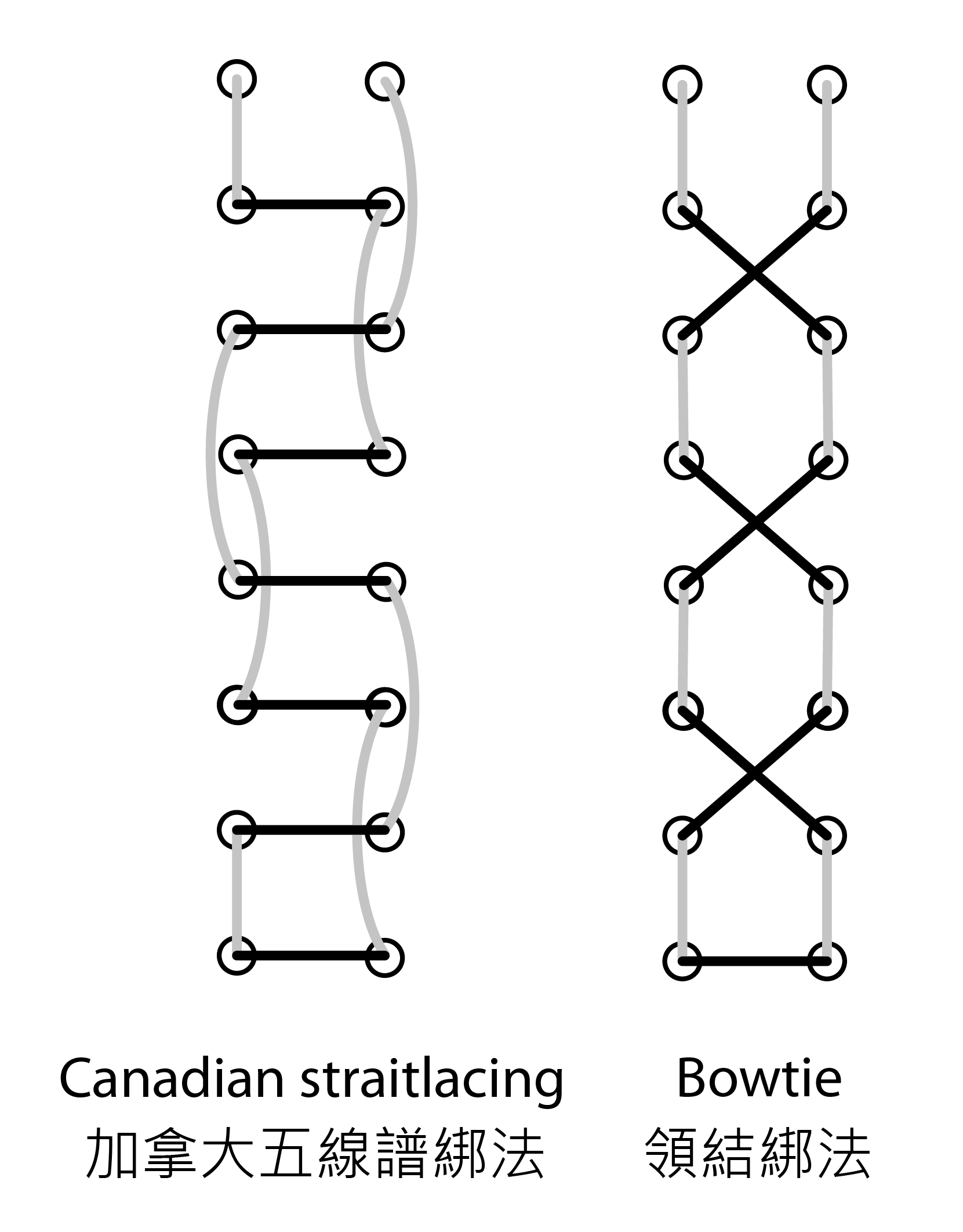
Figure 3 Common lacing methods which use vertical segments: Canadian straitlacing and bowtie. Gray lines represent the segments that cannot be seen from outside.
The Shortest Lacing
First let’s test the dense lacings. Assuming the laces are pulled tight, we could use Pythagoras’ theorem to find formulas for their lengths in terms of h, g and n [4]; interested readers may try to derive them by referring to the diagrams:
Crisscross: ![]()
European: ![]()
Shoe-store: ![]()
But the alternating property gives us a nice way to compare their lengths without doing any calculation. Say one end of the lacing lies on column A, at eyelet Ak. Imagine setting a mirror on column B so column A is reflected; then we can draw the reflected column A as a new column C with the eyelet Ak reflected onto Ck. Continue “unfolding” the lacing in this way [5]. Now instead of being laced between two columns of eyelets, our lacing moves horizontally across Figure 4 column by column, while reflecting the real length of each segment throughout the lacing.
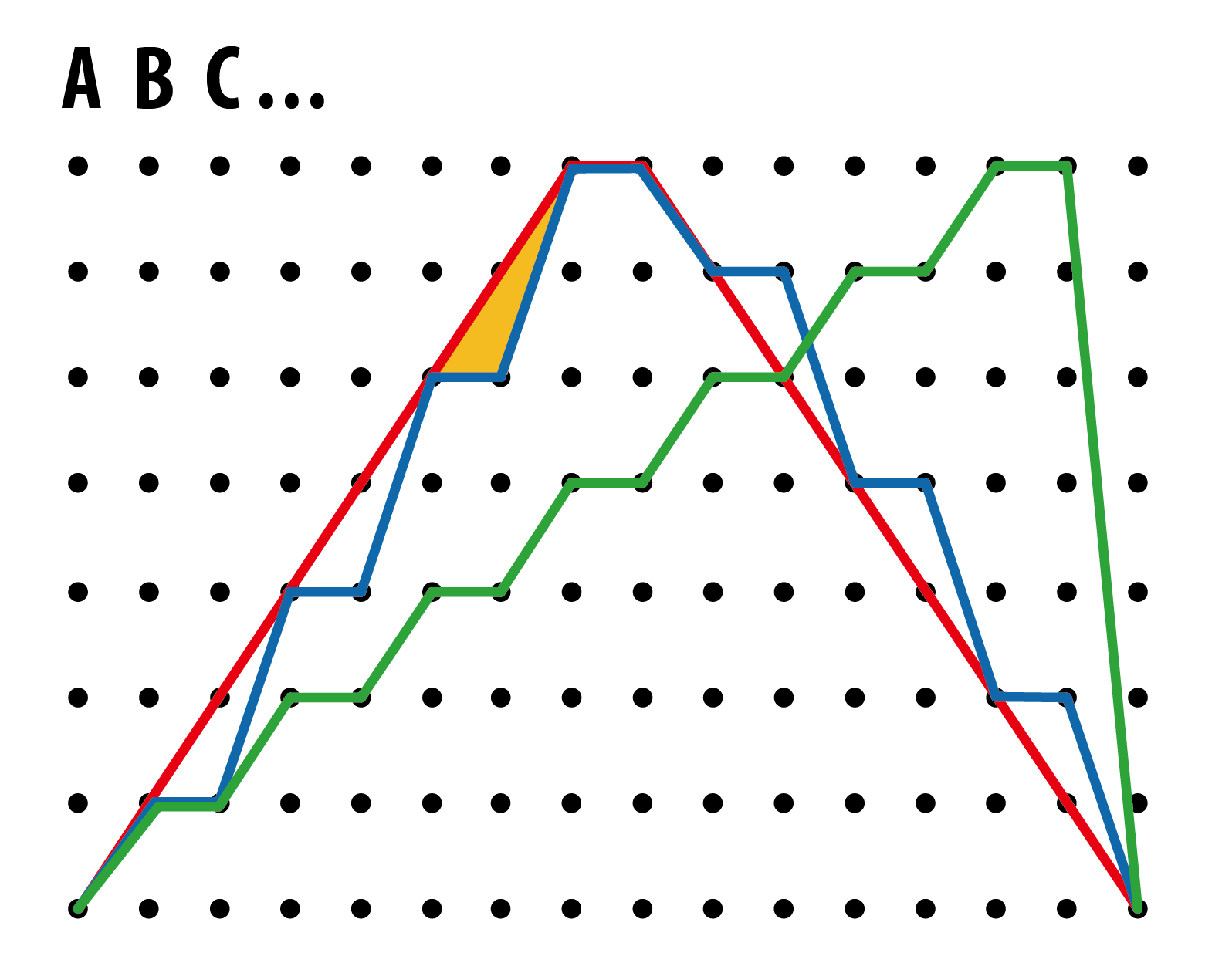
Figure 4 “Unfolded” lacing paths of the three alternating lacings: crisscross (red), European (blue), and shoe-store (green) [4]. The triangle shaded in orange can be used to compare the length of the crisscross and the European lacings.
By considering the orange triangle in Figure 4, we know that the crisscross lacing must be shorter than the European lacing, because the European lacing always runs along two sides of a triangle while the crisscross runs along the third side. By the triangle inequality (the sum of any two sides of a triangle is longer than the third side) the European is longer than the crisscross. To compare the European and the shoe-store method we eliminate the horizontal segments from both lacings (each of them has n − 1 horizontal segments) and the segments of matching slope. The remaining segments form the paths in darker colors in Figure 5 (left).
Now if we place a horizontal mirror at the tip of each V, the reflections in lighter colors show clearly that the shoe-store forms two sides of a triangle and the European forms the third (Figure 5 (right)). So again by the triangle inequality, the shoe-store is longer than the European, and of these three methods the crisscross is always the shortest. In fact, it can be shown that the crisscross is the shortest among all possible alternating lacings [2].
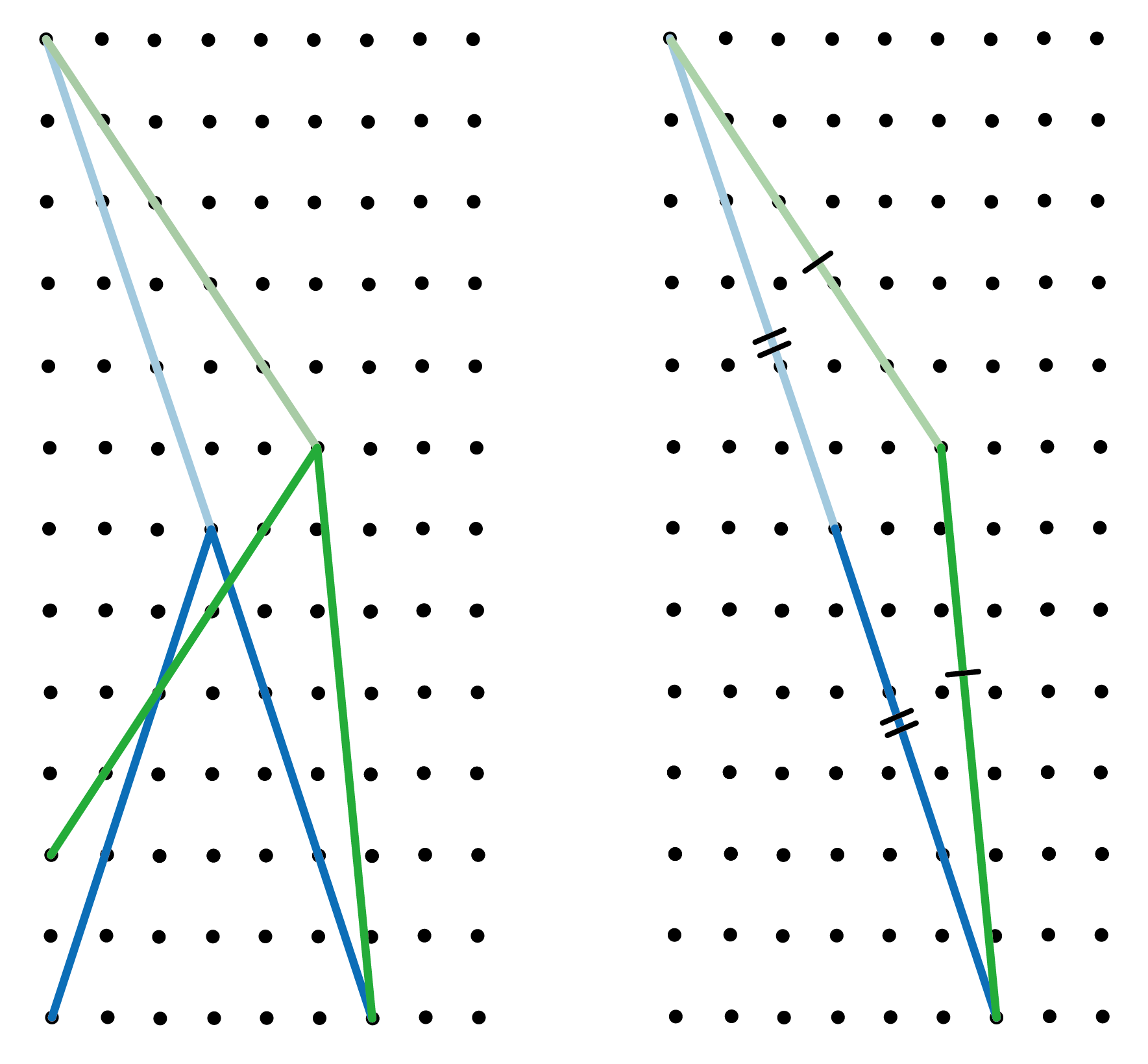
Figure 5 (Left) “Unfolded” lacing paths of the European (blue) and the shoe-store (green) lacings and their reflections (lighter colors) after subtracting common segments [3]. (Right) The triangle to determine the length of both lacing methods.
To find the shortest lacing in general, consider that we must keep the two sides of the shoe pulled together. The shortest way to do this while also advancing vertically is to use crossings; notice that lacings with only horizontal and vertical parts, such as the Canadian straitlacing, use excessively long vertical segments. Hence it is necessary for the shortest lacing to contain crossings. There are many possible complex crossings with overlapping crosses, but the shortest is clearly a simple cross between the pairs of eyelets in two adjacent rows. So the shortest lacing must contain only simple crosses. But by the triangle inequality, the sum of two vertical segments is shorter in length than any crossing (as visualized in Figure 6), so we want to maximize the number of vertical segments and minimize the number of simple crosses.

Figure 6 Comparison of the length of a simple cross (blue) and two vertical segments (green).
This can be obtained from the crisscross by adding in the maximum number of vertical lines to replace some crosses without making consecutive vertical lines, which exactly describes the bowtie lacing! Since only the bowtie has these exact characteristics, it must be the shortest possible lacing [6].
The Strongest Lacing
Now, what is the strongest lacing? When you pull on your shoelaces to tighten them, the lacing at each eyelet acts like a pulley, and the question can be restated in terms of finding the strongest pulleys. When tied, the tension along a shoelace is some constant force T. The important thing to measure is the horizontal tension Th, the direction in which the two sides of the shoe are being pulled together by the lacing. For horizontal segments, Th = T; for vertical segments, Th = 0; and for diagonal segments, Th is the horizontal component of T which can be calculated by trigonometry. Then the total sum of Th across the eyelets of a lacing is called its pulley sum, and the strongest lacing has the largest possible pulley sum.
Before we go further, let’s set the gap g between columns to 1 unit. This will simplify any calculations because now h, the height between successive eyelets in the same column, can also be thought of as the ratio of {height between eyelets}/{gap between columns}.
There is a nice theorem that the strongest possible lacings are also the two most commonly used: crisscross and shoe-store [6]. To determine which of the two lacings is stronger in a given case, we need to consider the number of eyelets n, and the relative height between eyelets h.
For n > 2, let C(n, h) be the pulley sum of the crisscross lacing and S(n, h) be that of the shoe-store lacing. Then for a given number n of eyelets, there exists exactly one hn > 0 such that C(n, hn) = S(n, hn); and furthermore:
- when h < hn, the crisscross lacing is strongest;
- when h = hn, both lacings are strongest;
- when h > hn, the shoe-store lacing is strongest.
In other words, the strongest lacing is the crisscross when the eyelets are close together in a column, and the shoe-store when they are farther apart.
The approximate values of hn for small n are listed in the following table [6]:
|
n |
3 |
4 |
5 |
6 |
7 |
8 |
9 |
10 |
|
hn |
0.9029 |
0.7412 |
0.6450 |
0.5794 |
0.5309 |
0.4931 |
0.4625 |
0.4372 |
You can measure h as a ratio on shoes with n pairs of eyelets, and compare n with the corresponding value of hn in the table. As I write this I’m wearing a pair of shoes laced by the crisscross method: They have 4 pairs of eyelets and h with value roughly 0.4, so obviously I made the right decision when I laced them. Of course, most shoes in stores today are made with h very close to hn, so whichever lacing you use will be quite strong regardless [6].
So how should you lace your shoes? It depends on whether you prioritize shorter or stronger lacings. The one that best balances minimal length and maximal strength seems to be the crisscross, so without other information you should go for that one, although bowtie can give a reasonable strength that at least your shoes won’t fall apart. But such information is always at your fingertips if you have a ruler, internet access (or a copy of Science Focus), and an inquiring mind. The last one is the most important of these – with that in hand, you can find answers to almost any question that comes your way.
References
[1] Polster, B. (2002). What is the best way to lace your shoes? Nature, 420, 476. https://doi.org/10.1038/420476a
[2] Stewart, I. (1996). Arithmetic and old lace. Scientific American, 275(1), 94-97. https://www.jstor.org/stable/24993276
[3] Stewart, I. (2006). How to Cut a Cake and Other Mathematical Conundrums. Oxford University Press.
[4] Peterson, I. (2020, October 30). The Shoelace Problem. The Mathematical Tourist. http://mathtourist.blogspot.com/2020/10/the-shoelace-problem.html.
[5] Halton, J. H. (1992). The shoelace problem (No. 92-032). Department of Computer Science, UNC Chapel Hill.
[6] Polster, B. (2006). The Shoelace Book: A Mathematical Guide to the Best (and Worst) Ways to Lace Your Shoes. American Mathematical Society.